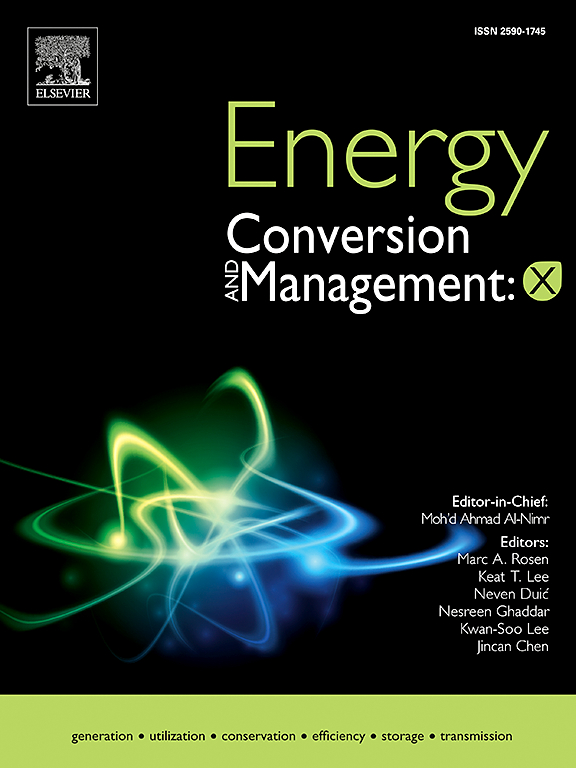Using the Taguchi method and grey relational analysis to optimize the parameter design of flat-plate collectors with nanofluids, and phase change materials in an integrated solar water heating system
IF 7.1
Q1 ENERGY & FUELS
引用次数: 0
Abstract
Solar water heating systems play a critical role in renewable energy applications, with their global market experiencing continuous growth due to increasing recognition and demand. Despite this, such systems face dual challenges in practical use: low thermal storage efficiency and insufficient heat retention. This study introduces an innovative integration of nanofluids and phase change materials (PCMs) with flat-plate collectors, representing a novel approach to addressing these challenges. Unlike prior studies that focused on individual technologies, this research combines advanced materials with multi-objective optimization to significantly enhance system performance. The Taguchi method was employed to plan the experiments, with nine control factors selected: PCM material, PCM volume, number of PCM tubes, working fluid, mass flow rate, number of collector tubes, collector tube material, tilt angle, and azimuth angle. A total of 36 experiments were designed using the Taguchi orthogonal array and simulated through TRNSYS software. Data from these experiments were analyzed using Signal-to-Noise (S/N) ratios, main effects analysis, and analysis of variance to identify optimal parameter combinations. Finally, grey relational analysis was utilized for multi-quality optimization, enabling the simultaneous enhancement of thermal storage efficiency and heat retention time. The results demonstrate that the optimized configuration achieved a thermal storage efficiency of 94.2 % and a heat retention time of 31.7 h. The optimal parameters included the use of PCM material, 20 % PCM volume, 14 PCM tubes, CuO nanofluid as the working fluid, a mass flow rate of 0.02 kg/s, 9 collector tubes, copper collector plates, a tilt angle of 22.4°, and an azimuth angle of 0° facing south. Compared to the non-optimized system, these optimizations increased thermal storage efficiency by 28 % and extended heat retention time by 14.6 h. The innovative integration and optimization framework presented in this study not only bridges the gap between theoretical research and practical applications but also provides a scalable solution for improving the efficiency of renewable energy systems.
求助全文
约1分钟内获得全文
求助全文
来源期刊

Energy Conversion and Management-X
Multiple-
CiteScore
8.80
自引率
3.20%
发文量
180
审稿时长
58 days
期刊介绍:
Energy Conversion and Management: X is the open access extension of the reputable journal Energy Conversion and Management, serving as a platform for interdisciplinary research on a wide array of critical energy subjects. The journal is dedicated to publishing original contributions and in-depth technical review articles that present groundbreaking research on topics spanning energy generation, utilization, conversion, storage, transmission, conservation, management, and sustainability.
The scope of Energy Conversion and Management: X encompasses various forms of energy, including mechanical, thermal, nuclear, chemical, electromagnetic, magnetic, and electric energy. It addresses all known energy resources, highlighting both conventional sources like fossil fuels and nuclear power, as well as renewable resources such as solar, biomass, hydro, wind, geothermal, and ocean energy.
 求助内容:
求助内容: 应助结果提醒方式:
应助结果提醒方式:


